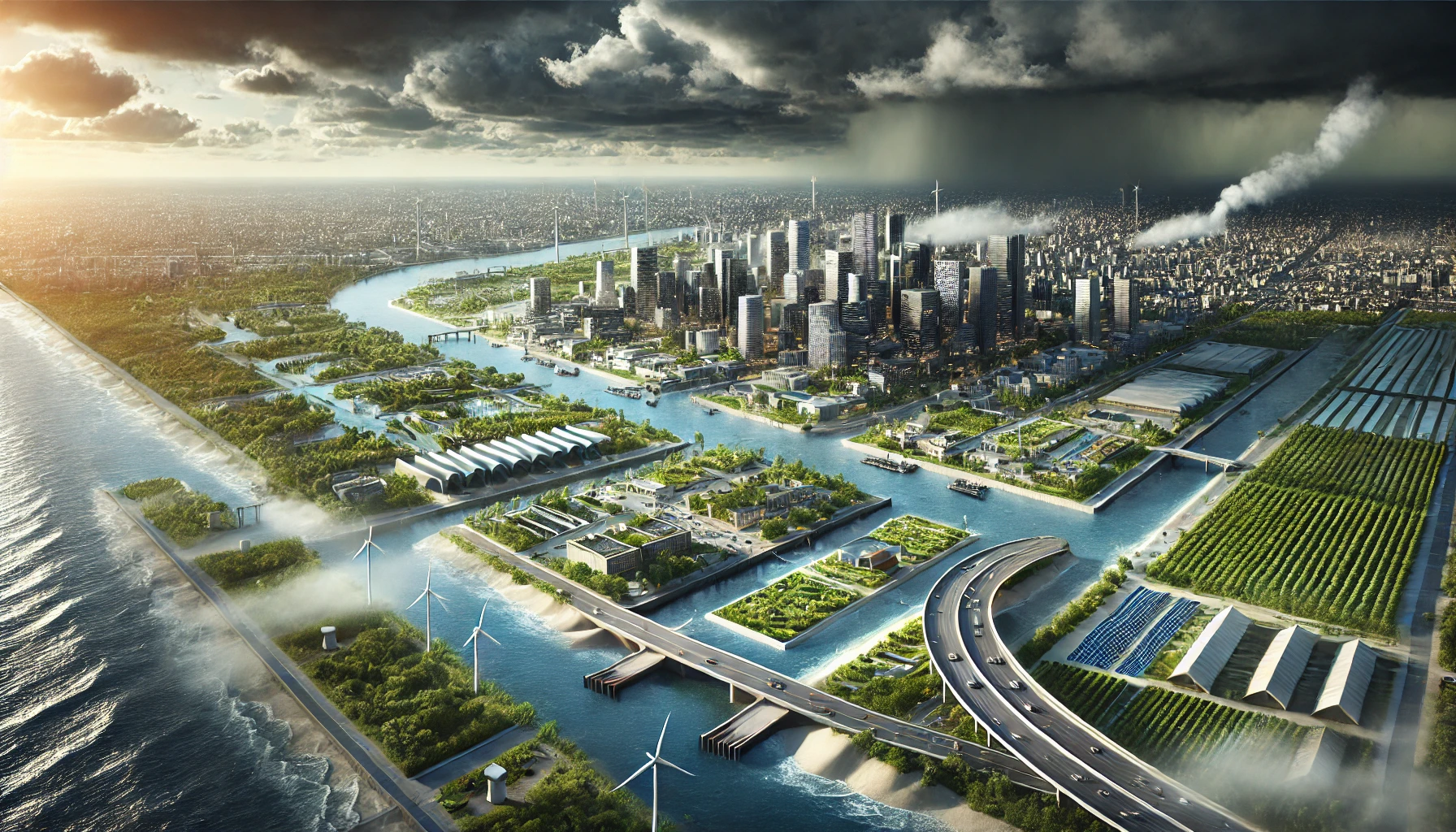As climate change accelerates, extreme weather events like floods, hurricanes, and wildfires are becoming more frequent and severe. This growing threat is pushing governments worldwide to prioritize investments in climate-resilient infrastructure—systems designed to withstand and recover from the impacts of these disasters. The focus on strengthening infrastructure is not just about building for today but ensuring communities and economies can thrive in a more unpredictable future.
Why Climate-Resilient Infrastructure Matters
Climate-resilient infrastructure aims to mitigate the damage caused by natural disasters by incorporating sustainable, durable, and adaptive designs. The devastating effects of floods, hurricanes, and rising sea levels highlight the vulnerability of existing infrastructure. In many regions, roads, bridges, energy systems, and water management facilities are not equipped to handle the increasing intensity of extreme weather. The failure of these systems can lead to widespread economic loss, disrupt supply chains, and displace entire communities.
Investing in climate-resilient infrastructure is critical for two main reasons:
- Protection of Economic Assets: With trillions of dollars of infrastructure at risk globally, governments are recognizing the importance of reinforcing and redesigning vital assets to prevent catastrophic losses. For example, New York City has made significant investments in its coastal defenses following the impact of Hurricane Sandy in 2012, which caused over $70 billion in damages.
- Reducing Recovery Costs: Resilient infrastructure reduces the need for expensive recovery and rebuilding efforts. According to the World Bank, every dollar invested in resilient infrastructure can save up to four dollars in post-disaster recovery costs. By integrating climate adaptation measures, governments can safeguard critical services like transportation, power, and clean water, ensuring communities remain functional even during extreme events.
Key Components of Climate-Resilient Infrastructure
- Flood-Resistant Construction: In flood-prone areas, governments are adopting new engineering techniques, such as building elevated roadways, creating green stormwater infrastructure, and reinforcing levees and dams. Cities like Rotterdam in the Netherlands have implemented innovative water management systems that integrate nature-based solutions, such as water plazas and wetlands, to absorb excess rainwater and protect urban areas.
- Stormproof Energy Systems: Energy infrastructure is often one of the first sectors affected by extreme weather. In response, governments are decentralizing power grids and incorporating renewable energy sources like wind and solar, which are less vulnerable to storms and offer greater reliability during disasters. For instance, after Hurricane Maria devastated Puerto Rico’s power grid in 2017, the island began investing in microgrids and solar energy to create a more resilient energy system.
- Resilient Transportation Networks: Ensuring transportation systems remain operational during extreme weather events is crucial for maintaining the flow of goods and services. Governments are focusing on raising roads, reinforcing bridges, and modernizing public transportation systems to withstand severe conditions. Japan, for example, has implemented advanced seismic technology in its rail networks to protect them from earthquakes.
- Smart Water Management: With droughts and rising sea levels becoming more common, water management systems must adapt to ensure the availability of clean water. Governments are investing in desalination plants, rainwater harvesting, and more efficient irrigation systems to protect water resources. In Australia, where droughts are increasingly common, cities are developing innovative water recycling programs and efficient irrigation technologies to combat water shortages.
Global Efforts to Build Resilient Infrastructure
Countries around the world are embracing climate-resilient infrastructure. The European Union has committed billions through its Green Deal to develop infrastructure that can cope with future climate challenges. In the United States, the Biden administration’s Infrastructure Investment and Jobs Act allocates $50 billion for climate resilience, targeting projects like wildfire prevention, flood risk mitigation, and coastal protection.
In addition to these large-scale investments, public-private partnerships are playing a crucial role in driving the development of climate-resilient projects. Companies like Neste, which focuses on renewable energy and sustainability solutions, are collaborating with governments to support infrastructure projects that reduce carbon footprints and enhance resilience. The transition to more resilient systems is not just a response to immediate climate threats but a strategic move towards long-term sustainability.
The need for climate-resilient infrastructure is no longer a future concern—it’s a present-day imperative. Governments around the world are investing in systems that can endure the challenges of extreme weather events, protecting their economies, communities, and the environment. As the effects of climate change intensify, building resilient infrastructure will be essential to securing a sustainable and prosperous future for all.




